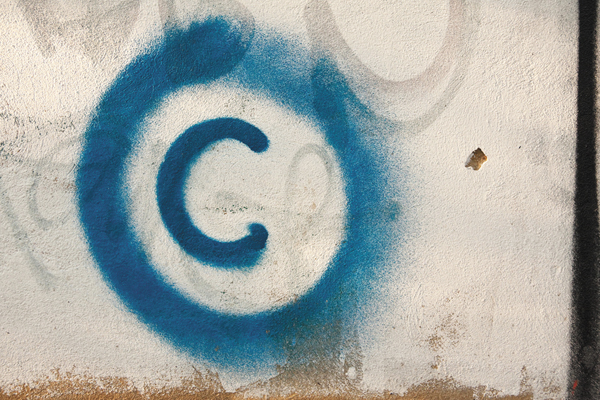 The compulsory mechanical license is a mechanism that allows anyone to record and distribute your composition (or allow you to make a cover of someone else’s work). There are several requirements and conditions that you need to know about regarding covers and the compulsory license:
The compulsory mechanical license is a mechanism that allows anyone to record and distribute your composition (or allow you to make a cover of someone else’s work). There are several requirements and conditions that you need to know about regarding covers and the compulsory license:
Legal Background: As in many facets of the recording industry, the compulsory mechanical license has its foundation in copyright law. In 1909, Congress created the first compulsory license to allow anyone to make a mechanical reproduction (then a player piano roll) of a musical composition without the consent of the copyright owner. The legislature crafted the law due to a concern that the right to make mechanical reproductions would become monopolized, so Congress created the “compulsory” license, which would allowed anyone to make “similar use” of the musical work upon payment of a royalty. There were responsibilities for both parties: the copyright owner had to place a copyright notice on their work and no one could take advantage of the license until the copyright owner had authorized the first mechanical reproduction of the work.
When Does the Compulsory License Apply? There are several circumstances that must be met before a compulsory mechanical license is granted:
Prior Distribution: The song being covered must have already been recorded and distributed by the copyright owner. This allows the songwriter to get a “first use” right to record and distribute their music first. Why? There are many reasons for this provision, but the most important is based on practicality: as a songwriter, you’ll want your own version (and vision) stamped on the song before someone else records it.
No Major Changes: One requirement under the law – albeit somewhat ambiguous – is that no major changes can be made in your cover. While you can change things like tempo, style, and dynamics, other characteristics of the song (i.e. chords, lyrics) cannot be made by way of a compulsory license (although there are other legal avenues to achieve this).
Audio Recordings Only: The compulsory mechanical license only applies to physical phonorecords and digitally distributed copies of an audio recording. Playing the song live requires a license from a performing rights organization, while an audiovisual work normally requires a synchronization license.
No Drama: The song you’re looking to cover has to be “non-dramatic,” which generally excludes songs from musical theatre and opera.
If each of the requirements is met, the license can be issued. Here’s how to go about that:
How to Obtain a Compulsory License:
Identify the Copyright Owner: First, you’ll need to find out who owns the legal right to the work, which can be accomplished in several ways. This first is through a traditional “©” mark on the physical recording or on the digital properties listing. If the owner is unknown, you can conduct a copyright search independently or with the assistance of the Copyright Office. For more information on copyright searches, go to www.copyright.gov/circs/circ22.pdf
Notify the Owner: Once the copyright owner is established, the most common ways of obtaining a compulsory license is from the music publisher or copyright owner directly or through the Harry Fox Agency.
The most straightforward way to obtain the license is through Harry Fox Agency, a company that, among other things, sets up arrangements with labels and publishers to grant compulsory mechanical licenses. The company issues compulsory licenses and collects and distribute royalties on behalf of its members. For general information on the Harry Fox Agency visit www.harryfox.com or call (212) 834-0100.
If you are contacting the copyright owner directly, before or within 30 days of making and distributing the work, you’ll need to serve a “Notice of Intention to Obtain a Compulsory License” on the copyright owner (or authorized agent) by certified or registered mail. There are several facts that must be included in this notice. Your best bet is to hire an attorney to draft and serve it, however, a sample can be found at www.freewebs.com/bismusic/forms/i2r.pdf
Regardless of how you obtain the license, you’ll be required to pay the copyright holder. Currently, the statutory rate is 9.10 cents per physical CDs or permanent digital download for songs five minutes or less (the calculation for interactive streams and limited downloads is a little more complicated). The result is that you’ll have to keep track of (and pay for) each record sold or song downloaded. If your band is partly defined by a brilliant cover or you feel it could be a launching pad, this may be entirely worth your while. However, covers for the sake of “album filler” are rarely worth the expense staring out. As an aside, it’s worth noting that the “statutory” rate is simply that – you can always attempt to negotiate directly with the copyright owner for a better option, such as a flat fee or reduced rate,
To dig deeper into the copyright code and compulsory licenses, see 17 USC § 115: “Scope of Exclusive Rights in Non-dramatic Musical Works: Compulsory License for Making and Distributing Phonorecords.”
Adam Barnosky is a Boston-based attorney and writer. For music industry news, entertainment law updates, or to suggest an upcoming Legal Pad topic, follow him on Twitter @adambarnosky.
Disclaimer: The information contained in this column is general legal information only. Consult your attorney for all specific considerations.
photo by Horia Varlan
